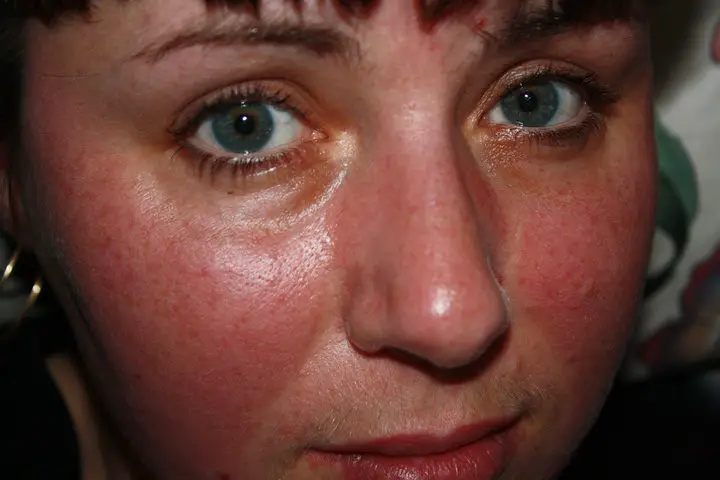How to get rid of redness after extractions is a common concern for those who have undergone facial treatments. Whether medical or cosmetic extractions, redness can cause discomfort and self-consciousness. This guide will walk you through the process of understanding and treating redness methodically.

Table of Contents
Apply a Cold Compress
Applying a cold compress is a simple and effective way to reduce redness and soothe the skin. Here’s a step-by-step guide:
Wrap ice or a cold compress in a soft cloth: This prevents the ice from directly touching and possibly damaging the skin. A cloth, towel, or even a paper towel will work.
Gently press against the affected area for 10 minutes: Apply gentle pressure to minimize swelling and numb the area, providing relief from any discomfort or stinging sensation. A time of 10 minutes is optimal to ensure the skin isn’t over-chilled.
Remove for 5 minutes to prevent over-chilling: It’s essential to avoid keeping the cold compress on for too long, as this can harm the skin and slow down the healing process. Repeat the process as needed, maintaining the 10-minute-on, 5-minute-off pattern.
Source: Global Health & Pharma
Use Gentle Skincare Products
Choosing appropriate skincare products is crucial in alleviating redness and aiding skin recovery. Here’s a guide:
Use a gentle, fragrance-free cleanser: Opt for products specifically formulated for sensitive skin. This minimizes irritation and avoids exacerbating the redness. The Vanicream Gentle Facial Cleanser is a good example of a cleanser that’s designed for sensitive skin and reduces redness.
Apply a mild, hydrating moisturizer: A product containing calming ingredients like chamomile or aloe vera helps in keeping the skin moist, promoting healing. Make sure it’s alcohol-free to prevent drying or irritation.
Avoid products with alcohol or harsh chemicals: Ingredients such as alcohol, retinoids, or glycolic acid can irritate sensitive skin, so it’s best to avoid them until the skin has healed.
Source: Paula’s Choice
Avoid Sun Exposure
Protecting the skin from the sun is essential in speeding up the healing process:
Wearing sunscreen with at least SPF 30: Applying a sunscreen that’s gentle on the skin protects against UV rays, which can prolong redness and cause other skin issues. The Hawaiian Tropic Sheer Touch Lotion Sunscreen SPF 30 is oxybenzone-free.
Wearing a wide-brimmed hat or seeking shade: Physical barriers like a hat or umbrella offer additional protection against direct sun exposure, especially during peak sun hours.
Avoiding tanning beds or other artificial UV sources: These can have the same damaging effects as the sun, so it’s wise to avoid them while the skin is healing.
Source: Skin Cancer Foundation
Consult a Professional If Needed
If home remedies aren’t enough, it’s time to seek professional guidance:
Contact a dermatologist or skincare professional: They have the expertise to accurately diagnose and treat persistent redness, ensuring proper care.
Describe the extraction procedure and any home treatments you’ve tried: Providing a detailed history helps the professional understand your unique situation, allowing for a more tailored approach to treatment.
Follow their personalized advice and treatments: Professionals may recommend over-the-counter products, prescription medications, or in-office procedures to address your specific condition. Adhering to their advice ensures effective treatment.
Understanding the Cause of Redness
It’s vital to understand the underlying causes of redness after extraction. This way, you’ll be able to prevent it from happening again. The skin might become red due to several factors:
Inflammation: Physical trauma during extraction can cause temporary inflammation.
Sensitivity: Skin might react to products or tools used during the extraction process.
Temporary irritation: Pressure or tools used might cause brief irritation, leading to redness.
Understanding these causes helps in choosing the most effective remedies and prevents unnecessary treatments that might exacerbate the situation.

